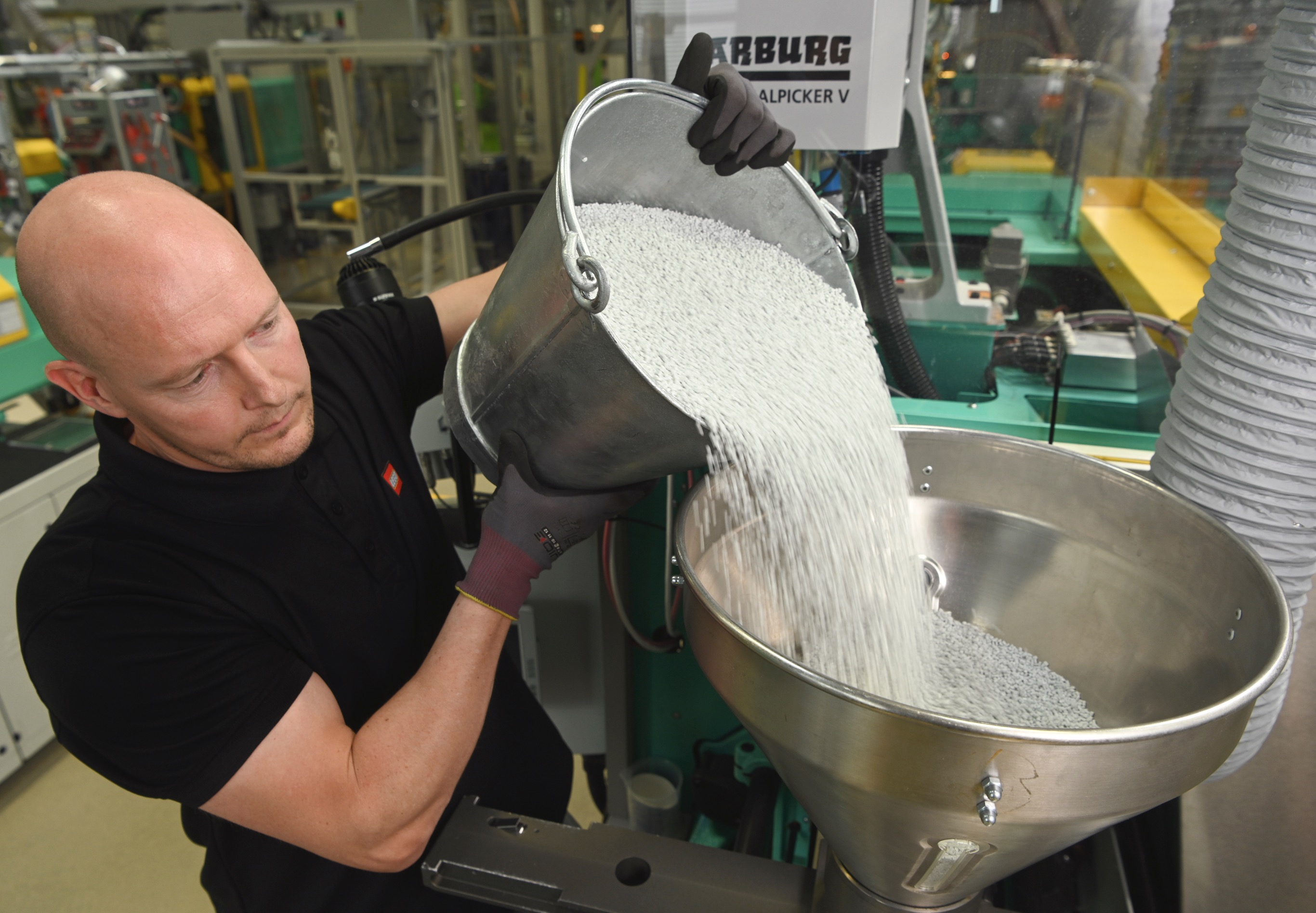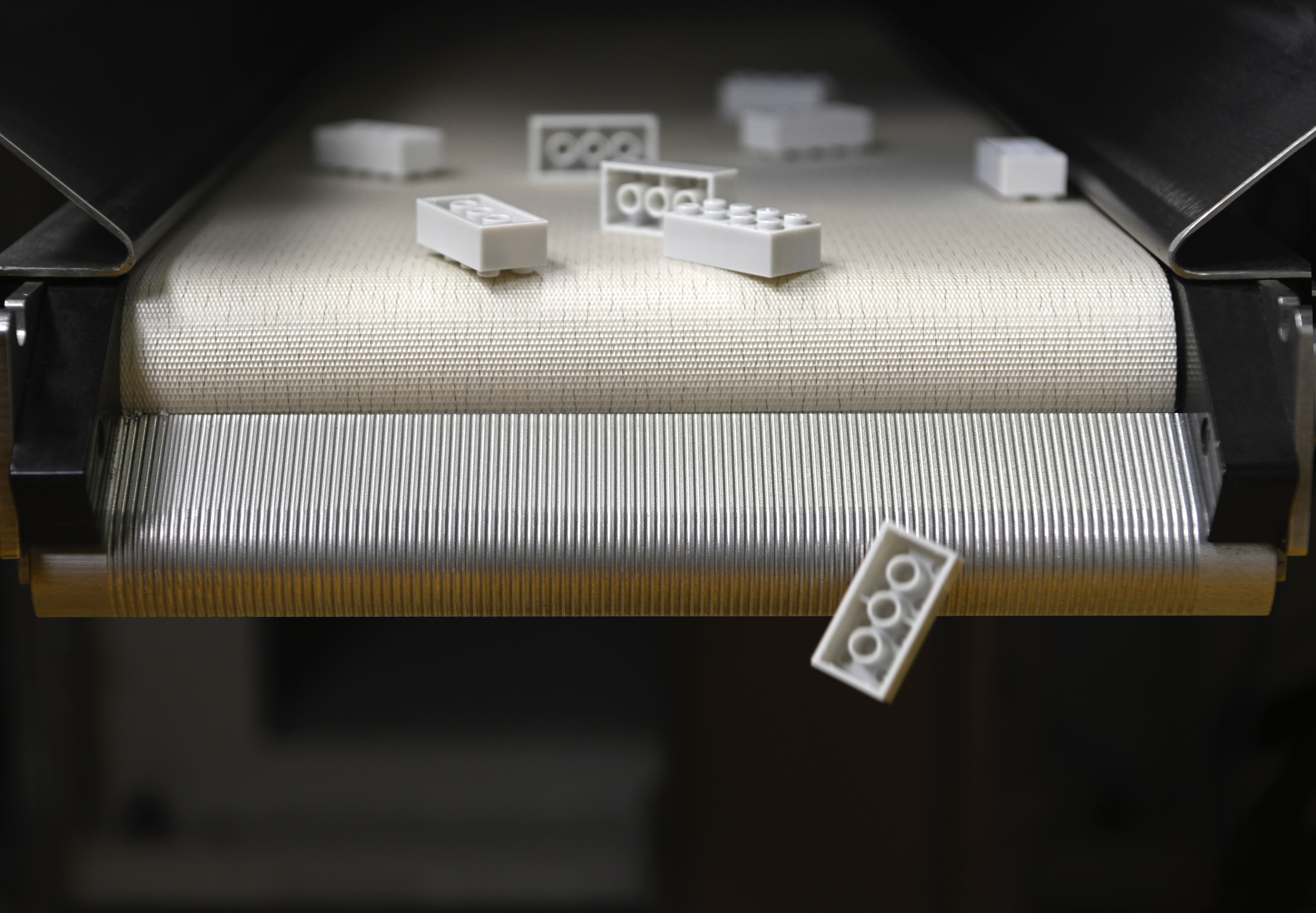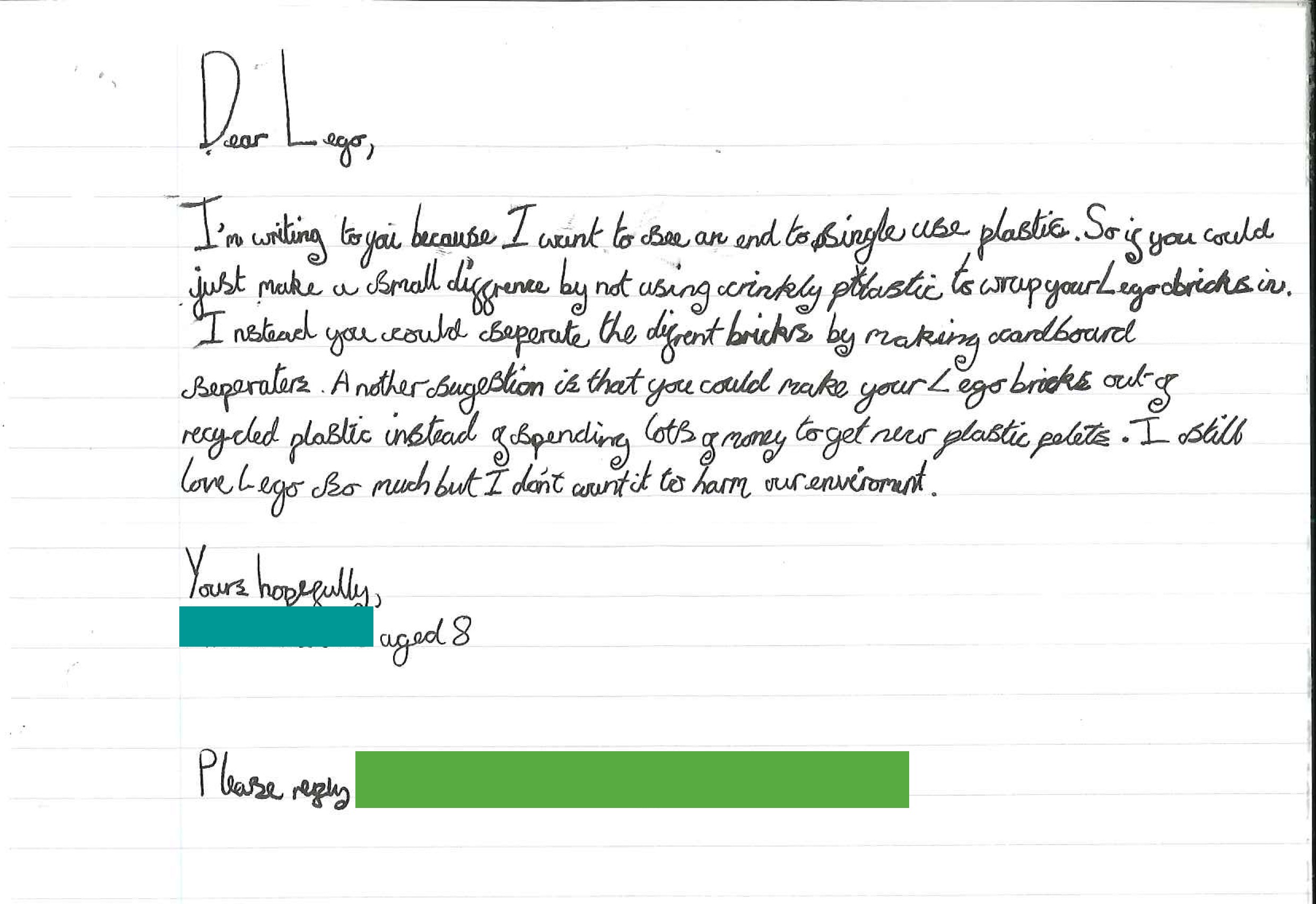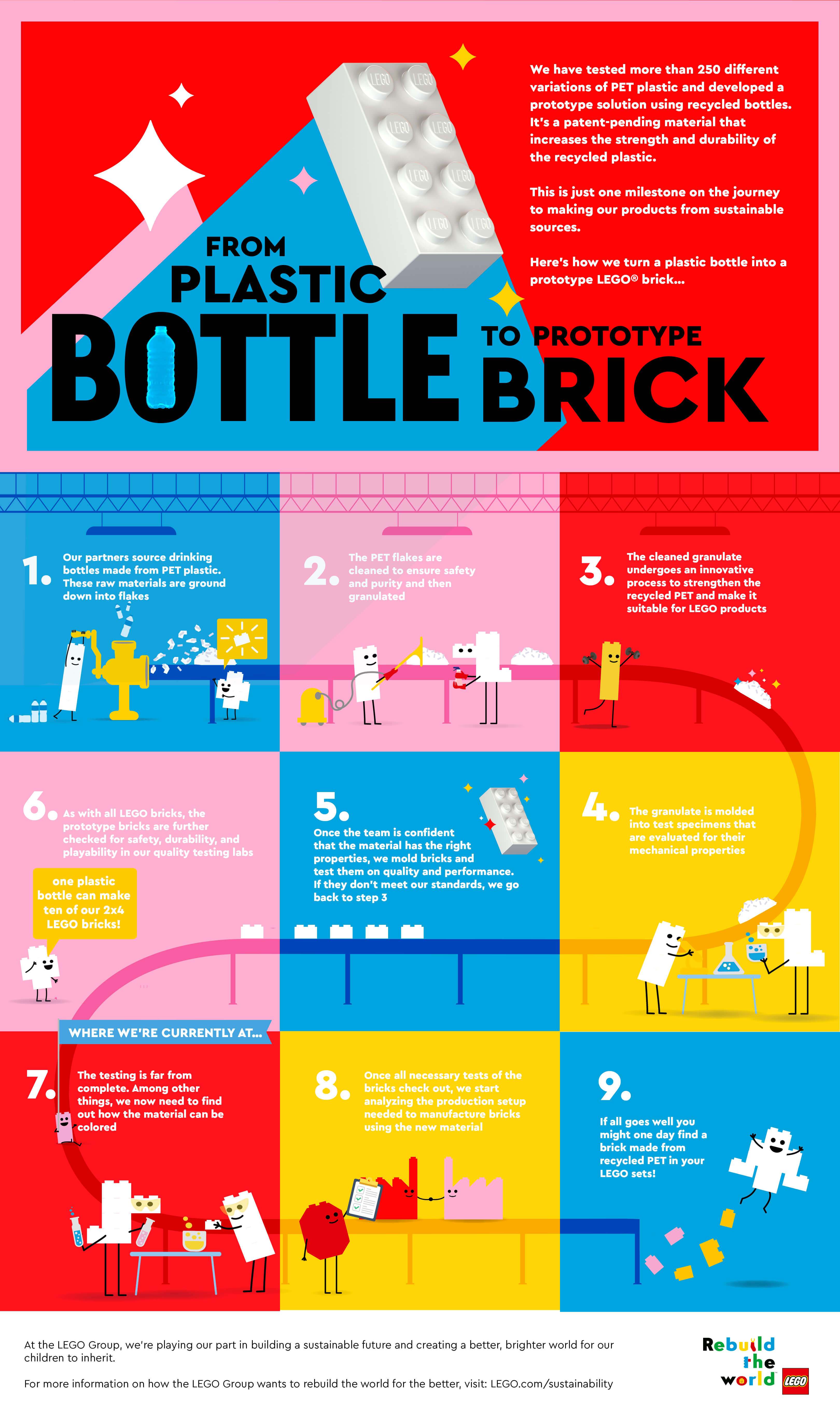
- Sustainable Planet -
- 5mins -
- 372 views
LEGO® reveals their first brick made from recycled plastic
The LEGO Group has unveiled a prototype LEGO® brick made from recycled PET bottles, the latest step in a journey to make their products from sustainable materials.
Lego’s new recycled brick meets company standards
The makers of LEGO recently announced they now have a prototype brick made from recycled plastic that comes up to company standards for the iconic building toy. The new prototype uses PET plastic from discarded bottles, and has met all the company’s strict quality and safety requirements.

Lego reveal prototype recycled plastic brick
On Wednesday 23rd June, 2021, the LEGO Group unveiled a prototype LEGO® brick made from recycled plastic, which the company say is the latest step in its journey to make LEGO products from sustainable materials.
The new prototype, which uses PET (polyurethane terephthalate) plastic from discarded bottles, is the first brick made from a recycled material to meet the company’s strict quality and safety requirements.
A team of more than 150 people are working to find sustainable solutions for LEGO products. Over the past three years, materials scientists and engineers tested over 250 variations of PET materials and hundreds of other plastic formulations. The result is a prototype that meets several of their quality, safety and play requirements – including clutch power.
Vice President of Environmental Responsibility at the LEGO Group, Tim Brooks said: “We are super excited about this breakthrough. The biggest challenge on our sustainability journey is rethinking and innovating new materials that are as durable, strong and high quality as our existing bricks – and fit with LEGO elements made over the past 60 years. With this prototype we’re able to showcase the progress we’re making.”
Source: LEGO

Uncompromised quality and safety
According to a news release from the company, it will be some time before bricks made from a recycled material appear in LEGO product boxes. The team will continue testing and developing the PET formulation and then assess whether to move to the pilot production phase. This next phase of testing is expected to take at least a year.
Brooks said: “We know kids care about the environment and want us to make our products more sustainable. Even though it will be a while before they will be able to play with bricks made from recycled plastic, we want to let kids know we’re working on it and bring them along on the journey with us. Experimentation and failing is an important part of learning and innovation. Just as kids build, unbuild and rebuild with LEGO bricks at home, we’re doing the same in our lab.”
The prototype is made from recycled PET sourced from suppliers in the United States that use US Food & Drug Administration (FDA) and European Food Safety Authority (EFSA) approved processes to ensure quality. On average, a one-litre plastic PET bottle provides enough raw material for ten 2 x 4 LEGO bricks.
Source: LEGO

The Journey towards more sustainable products
The news release went on to say the patent-pending material formulation increases the durability of PET to make it strong enough for LEGO bricks. The innovative process uses a bespoke compounding technology to combine the recycled PET with strengthening additives.
The recycled prototype brick is the latest development in making the LEGO Group’s products more sustainable. In 2020, the company announced it will begin removing single-use plastic from its boxes. In 2018, it began producing elements from bio-polyethylene (bio-PE), made from sustainably sourced sugarcane.
Many LEGO sets contain elements made from bio-PE which is perfect for making smaller, softer pieces such as trees, branches, leaves and accessories for minifigures. Bio-PE is not currently suitable for making harder, stronger elements such as the iconic LEGO bricks.
Brooks said: “We’re committed to playing our part in building a sustainable future for generations of children. We want our products to have a positive impact on the planet, not just with the play they inspire, but also with the materials we use. We still have a long way to go on our journey but are pleased with the progress we’re making.”
The LEGO Group’s focus on sustainable material innovation is just one of several different initiatives the company has in place to make a positive impact. The LEGO Group will invest up to US $400 million over three years to 2022 to accelerate its sustainability ambitions. For more information on how the LEGO Group wants to rebuild the world for the better, visit: LEGO.com/Sustainability
Source: LEGO



Turning a bottle into the LEGO brick
To find out how the LEGO Group turns recycled plastic bottles into LEGO bricks, click HERE


